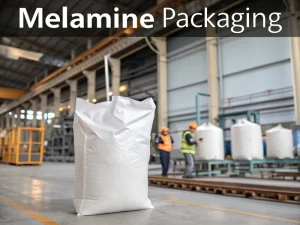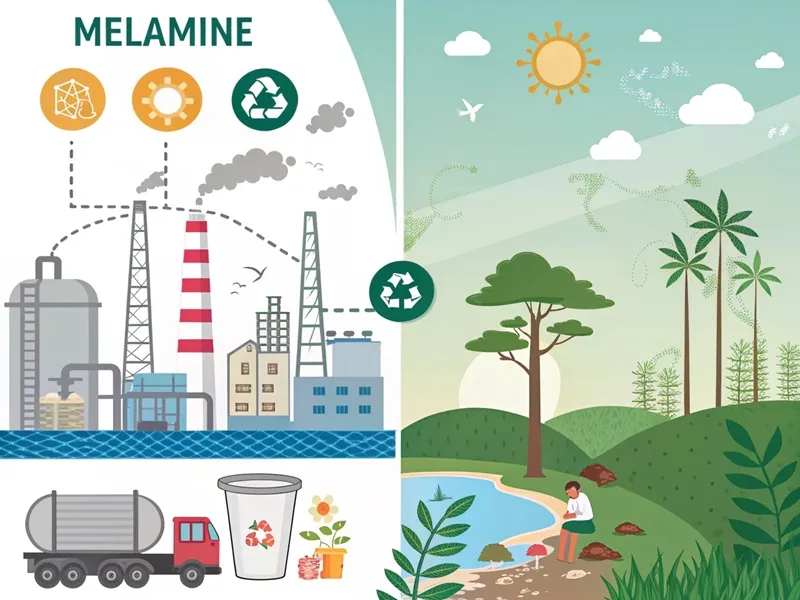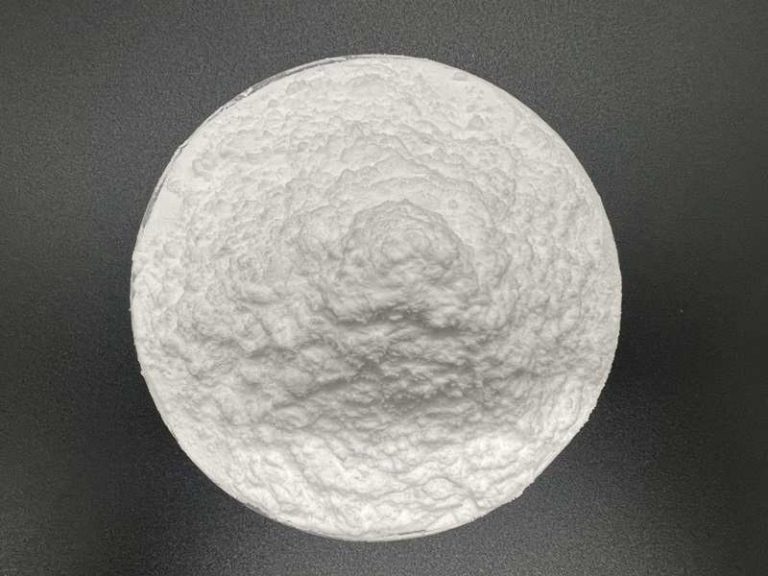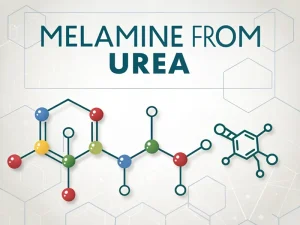
Melamine Packaging
Tech Blog Melamine packaging For manufacturers, inaccurate packaging not only fails to meet national standards but also increases labor costs and the risk of product


In an era of growing environmental awareness, the environmental impact of various substances is under intense scrutiny. Melamine, a chemical compound with various industrial applications, has also been spotlighted.
This article will explore the multi-faceted relationship between melamine powder and the Environment, considering its production, use, and disposal.
Melamine powder is a nitrogen-rich heterocyclic organic compound. Its unique chemical structure endows it with high-temperature resistance, hardness, and chemical stability. These characteristics make it an ideal raw material for many industries.

The production of melamine involves energy-intensive processes. The most common production method, the synthesis of melamine from urea, requires high temperatures and pressures. The energy needed for these reactions is often sourced from fossil fuels, such as coal or natural gas.
High energy consumption not only contributes to the depletion of non-renewable energy resources but also leads to the emission of greenhouse gases. For example, the combustion of fossil fuels releases carbon dioxide, a major contributor to global warming.
Various pollutants can be emitted during the production process. Ammonia is a common by-product in melamine production. If not properly captured and recycled, ammonia can be released into the atmosphere. In the air, ammonia can react with other pollutants, such as sulfur dioxide and nitrogen oxides, to form particulate matter, which harms human health and contributes to acid rain.
Additionally, the production process may release volatile organic compounds (VOCs), which can participate in photochemical reactions in the atmosphere, leading to smog formation.
Melamine production also generates waste materials. Solid waste must be properly managed, such as unreacted raw materials and by-products. These waste materials can contaminate soil and water sources if not disposed of correctly. For instance, heavy metals or other impurities in the waste can leach into the soil, affecting soil fertility and potentially entering the food chain through plants.
Due to their chemical stability, Melamine-based products can persist in the Environment for a long time. For example, melamine-formaldehyde plastics are slow to degrade in natural environments. When these products are discarded in landfills or the natural Environment, they can accumulate over time, taking up space and potentially causing visual pollution. In addition, the slow degradation of melamine-based products may also lead to releasing harmful substances over an extended period.
Under certain conditions, melamine-based products can leach chemicals into the Environment. For example, when melamine-coated tableware is used to hold acidic or hot substances, there is a risk of melamine or formaldehyde leaching into the food or drink. Although the amount of leaching may be small, continuous exposure to these substances can have potential health impacts on humans and animals. In addition, if these substances enter water bodies, they can also affect aquatic ecosystems.
When melamine-based products are sent to landfills, they face the problem of slow decomposition. As mentioned earlier, melamine-formaldehyde plastics are not easily biodegradable. These products can take decades or even centuries to break down in landfills.
During this time, they can contribute to the growth of landfills, and the potential leaching of harmful substances from the products can also contaminate the soil and groundwater around the landfill site.
Incineration is another disposal method for melamine-based products. However, incineration also has its environmental drawbacks. When melamine-containing materials are burned, they can release nitrogen oxides () and other harmful gases into the atmosphere. These gases can contribute to air pollution, smog formation, and acid rain.
In addition, the ash produced after incineration may also contain heavy metals or other contaminants, which need to be properly managed to avoid environmental pollution.
Developing and adopting cleaner production technologies can significantly reduce the environmental impact of melamine production. For example, improving the production process to increase energy efficiency can reduce energy consumption and greenhouse gas emissions.
New technologies can also be used to better capture and recycle by-products, such as ammonia, reducing their release into the Environment.
Promoting the recycling and reuse of melamine-based products can help reduce the amount of waste sent to landfills or incinerators. Recycling can save resources and energy, as recycling materials often requires less energy than producing new ones. For example, melamine-formaldehyde plastics can be recycled through mechanical or chemical processes to be used again to produce new products.
Research and development of biodegradable alternatives to melamine-based products can provide a long-term solution to the environmental problems associated with melamine. Biodegradable materials can break down more quickly in the Environment, reducing the accumulation of waste.
For example, some bio-based polymers can be used as substitutes for melamine-formaldehyde resins in certain applications, offering similar performance while being more environmentally friendly.
In conclusion, melamine does have several negative environmental impacts throughout its life cycle, from production to disposal. The energy-intensive production process, emissions of pollutants, slow degradation of products, and potential leaching of harmful substances all pose challenges to the Environment.
However, by implementing mitigation strategies such as cleaner production, recycling, and the development of biodegradable alternatives, the environmental impact of melamine can be minimized. As we strive for a more sustainable future, it is essential to balance the benefits of melamine in various industries with the need to protect our Environment.

Tech Blog Melamine packaging For manufacturers, inaccurate packaging not only fails to meet national standards but also increases labor costs and the risk of product

Tech Blog How to Detect Melamine in Textiles? Melamine powder, a nitrogen-containing heterocyclic compound, is widely used in flame-retardant textiles and plastic products due to

Tech Blog melamine from urea Melamine is well-known for its wide range of applications, but its raw material for production is surprisingly urea. For manufacturers,

JINGJIANG MELAMINE POWDER
© JINJIANG MELAMINE